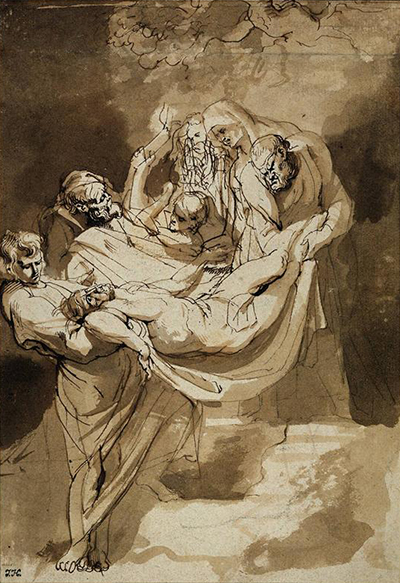Peter Paul Rubens produced multiple ink sketches on the key religious theme of The Entombment of Christ
The image of this drawing clearly displays the use of ink to provide a focus on the key elements of the composition. The majority of this artwork is covered with subtle shades of colour before Rubens then adds figurative detail through simple lines of ink across the facial expressions of those around Christ.
Christ himself is then outlined in ink in order to emphasise his importance in this drawing. The amount of work with ink suggests constant amendments and study, truly an artwork where the artist aimed to learn more about a future artwork.
The fact that the background was also left bereft of detail shows that this was meant as purely a practice piece which was never intended to be examined by those outside of his inner circle. The Entombment is also the title for another Rubens work which arrived in 1612 and can now be found at the Paul Getty Museum. That oil painting features a significantly different layout but serves as another example of how Rubens revisited this theme on many occasions.
The Entombment of Christ is a theme frequently used by artists of the Renaissance and Baroque periods and most famously depicted by Caravaggio. The emotional nature of this narrative perfectly suited this characterful Italian master whose life was never far from controversy.
Rubens would use Christian themes throughout his artistic career, with other significant artworks including Elevation of the Cross and Descent from the Cross. Other exponents of this theme include Hieronymus Bosch, Raphael, Michelangelo and Rembrandt.




